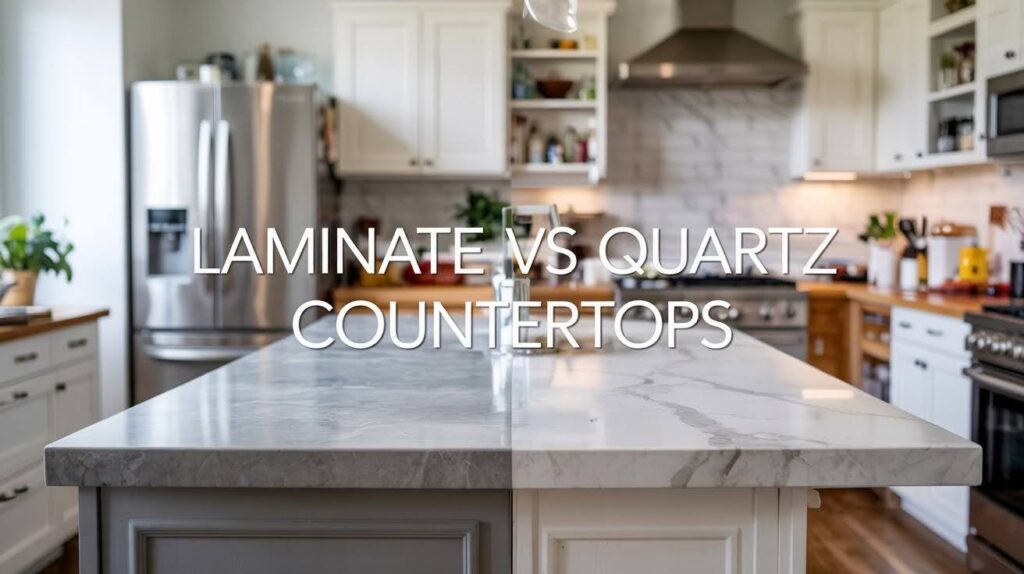A proper countertop choice greatly affects your kitchen’s look and purpose. I have helped dozens of homeowners find the right material for a kitchen. Laminate and quartz countertops both have their fans and serve differing market needs.
We cover everything you need to know: looks, durability and maintenance, cost, and installation. You will find fair comparisons free from marketing hype. You will find them without a sales pitch.
Then you’ll learn what items suit your life and your funds. Let’s get started on finding the right countertop. It is right for you.
Understanding Countertop Materials
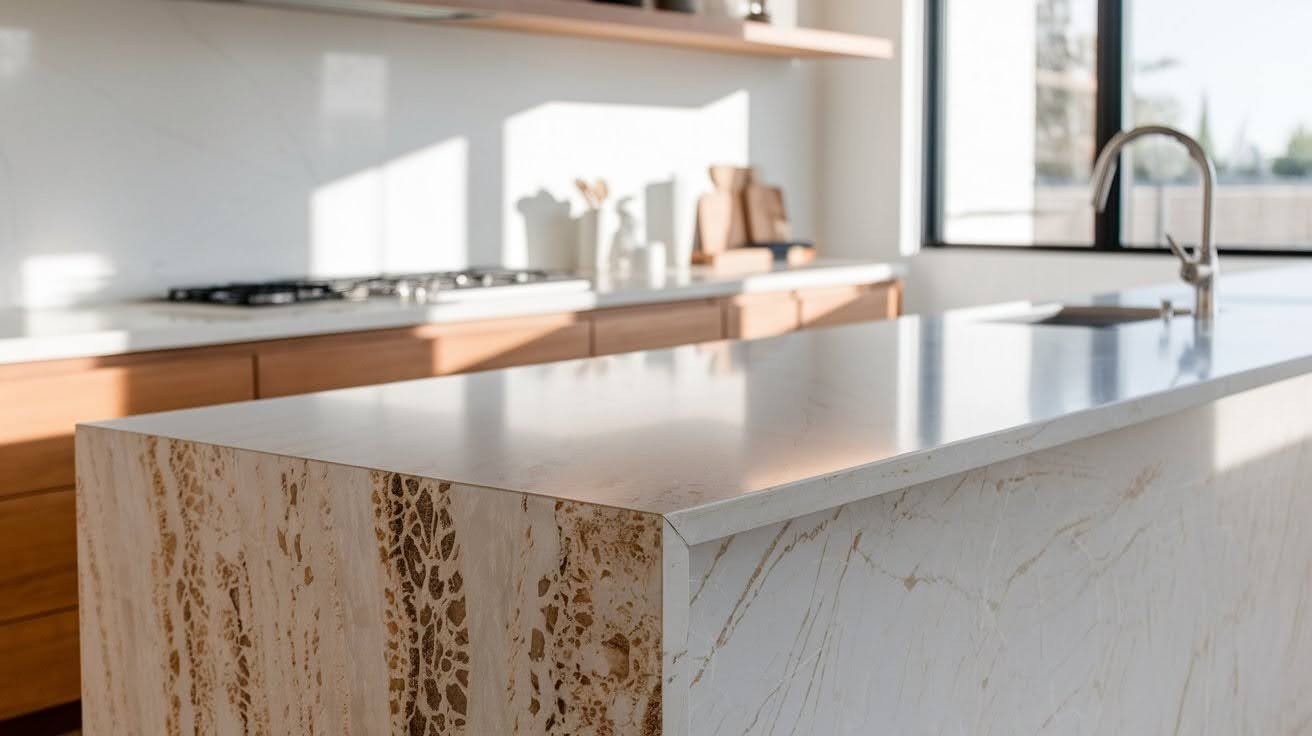
Both materials come from completely different manufacturing processes, which explains why they perform so differently in real kitchens.
Laminate countertops use layers of kraft paper and resin with a decorative top layer on MDF or particleboard. Modern versions mimic natural stone accurately at affordable prices.
Quartz countertops combine 90-95% ground quartz crystals with polymer resin, creating an engineered stone that’s non-porous and highly durable. This premium material resists bacteria and requires minimal upkeep.
Appearance and Design Options
Your countertop sets the visual tone for your entire kitchen, so design flexibility matters more than you might think.
Laminate Countertops
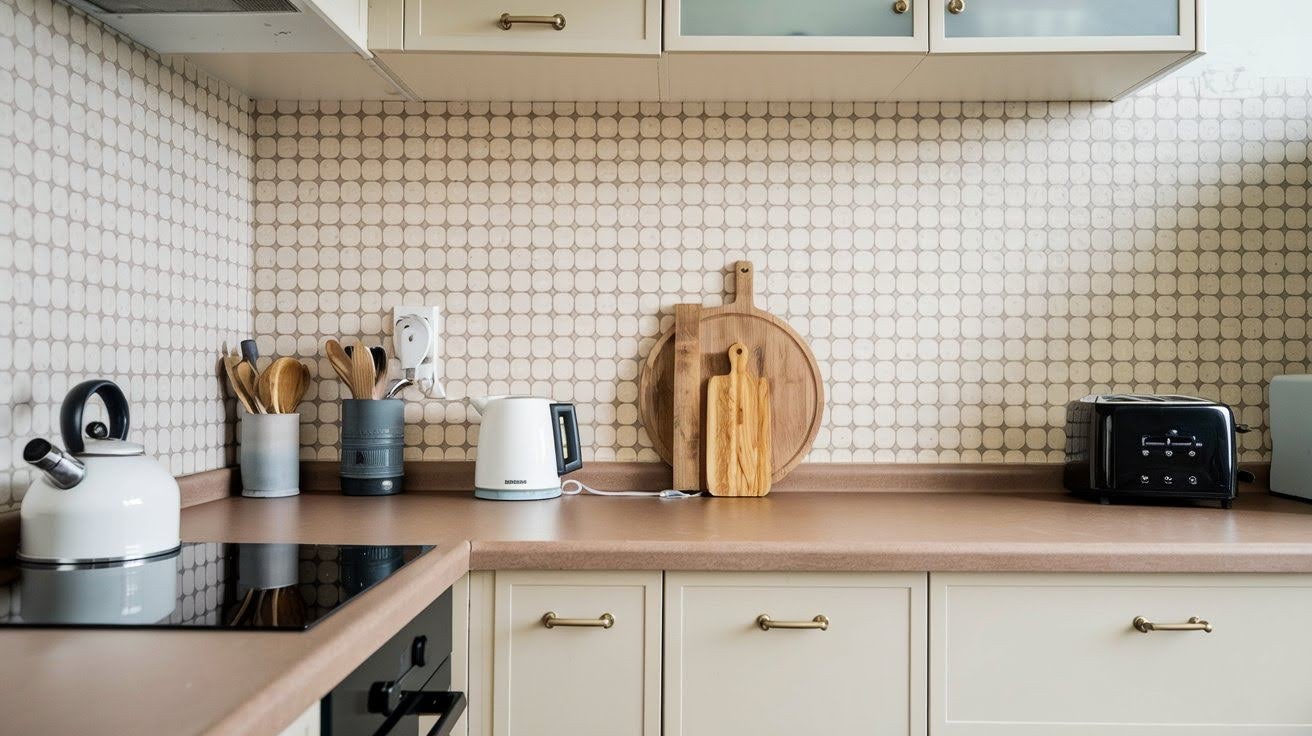
Laminate offers almost unlimited choices with hundreds of colors, from subtle neutrals to bold shades.
Recent printing technology allows laminate to copy marble veining and stone patterns with convincing detail. Budget-conscious designs don’t have to look cheap anymore.
Quartz Countertops
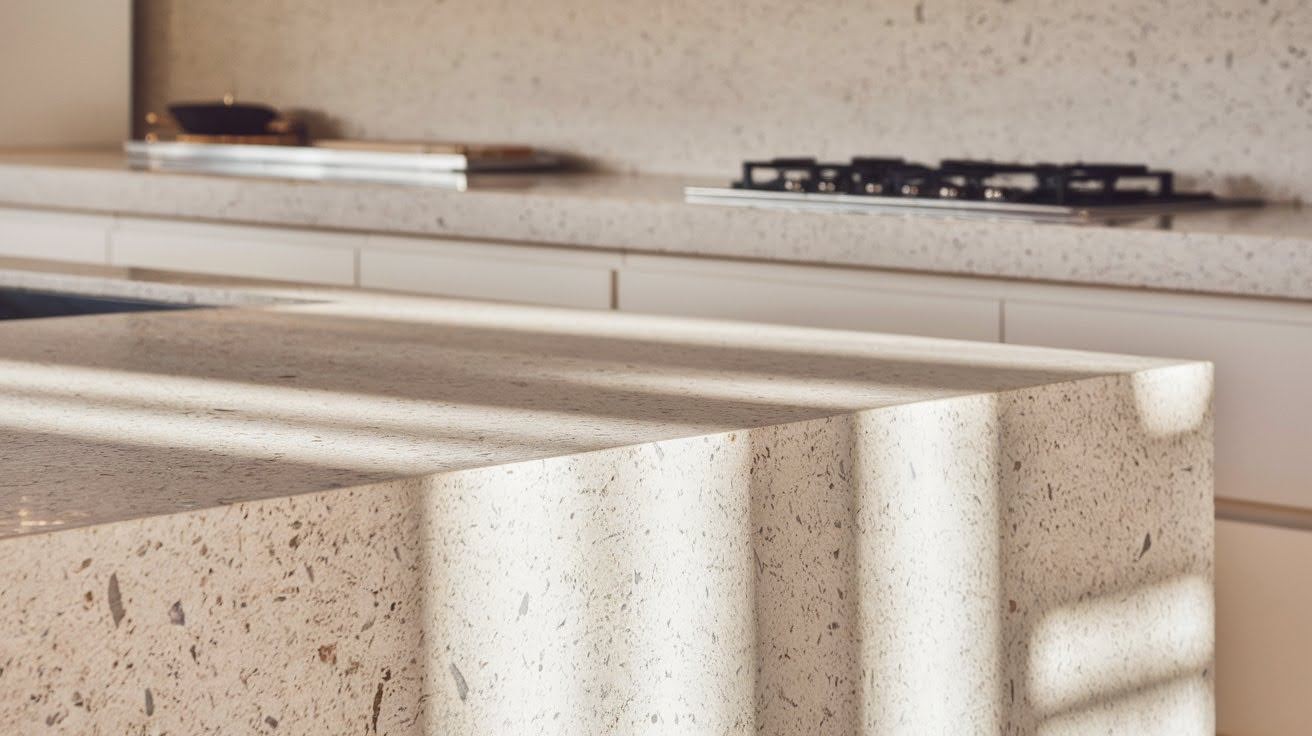
Quartz brings a natural stone look with flecked patterns that create visual depth. Light hits the surface differently than flat laminate, giving it a three-dimensional quality.
Color options are more limited but tend toward natural stone looks. The material has weight and presence that feels luxurious and substantial.
Durability and Maintenance
How well your countertop holds up to daily use will affect your satisfaction for years to come.
Laminate
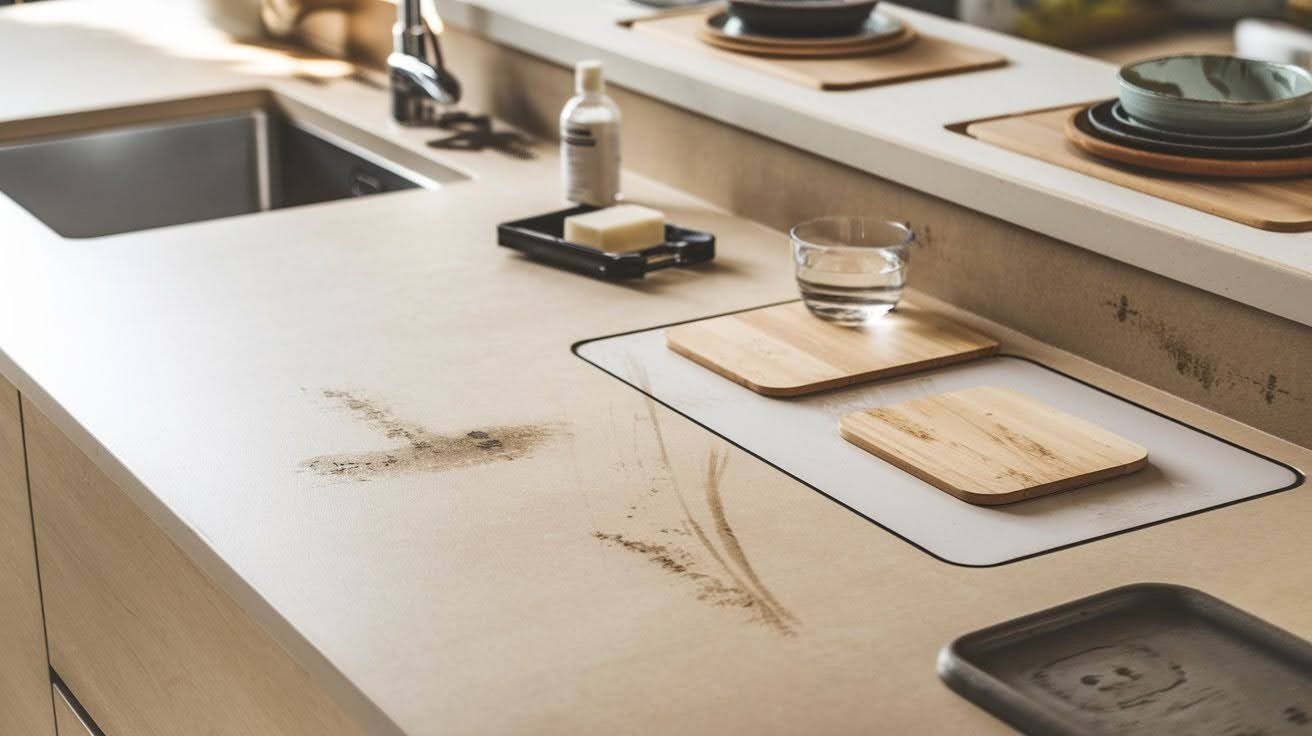
Laminate resists stains and cleans easily with soap and water. However, sharp knives can cut through the surface, heavy pots can dent it, and hot pans will leave permanent burn marks or bubbles. Once damaged, those marks stay forever. Always use trivets and cutting boards.
Quartz
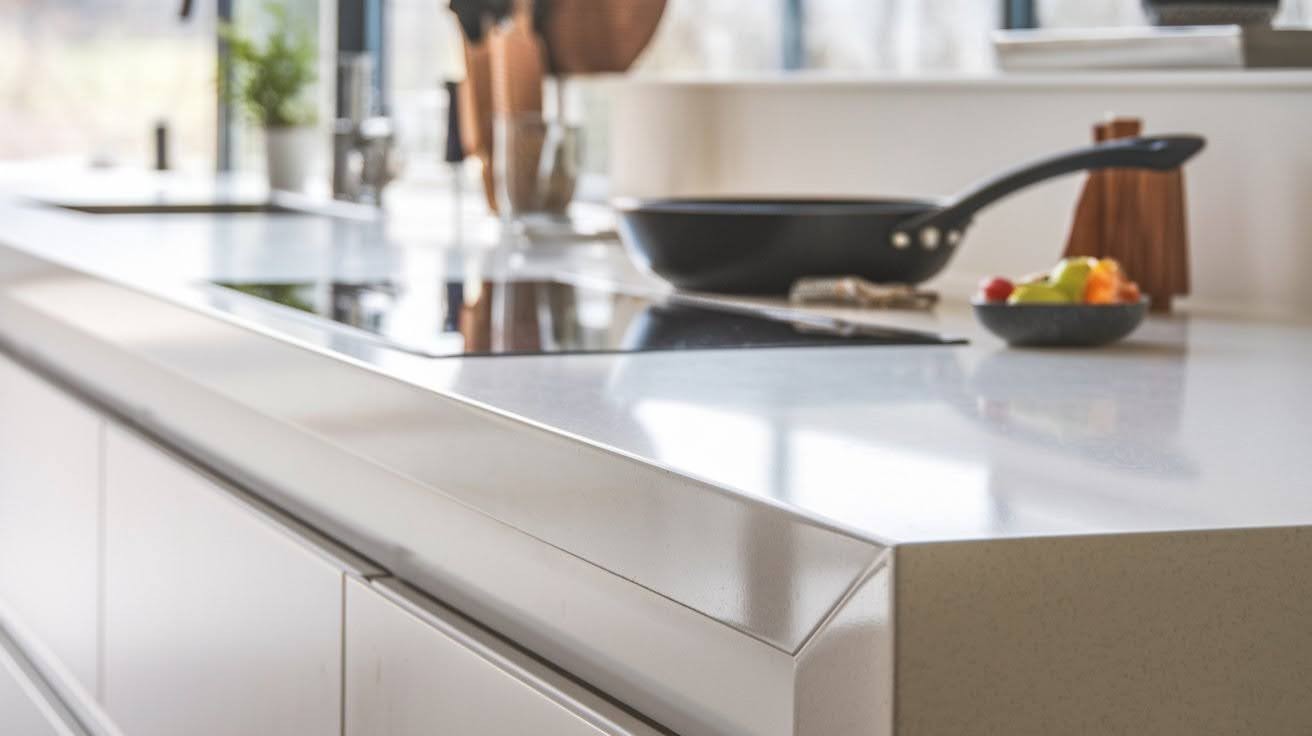
Quartz resists scratches from normal use, though hard impacts can chip edges. Brief contact with hot items usually causes no problems, but prolonged heat can discolor or crack the surface.
The non-porous surface makes cleaning simple with no special cleaners or sealants needed. Minor scratches can sometimes be professionally repaired.
Cost Considerations
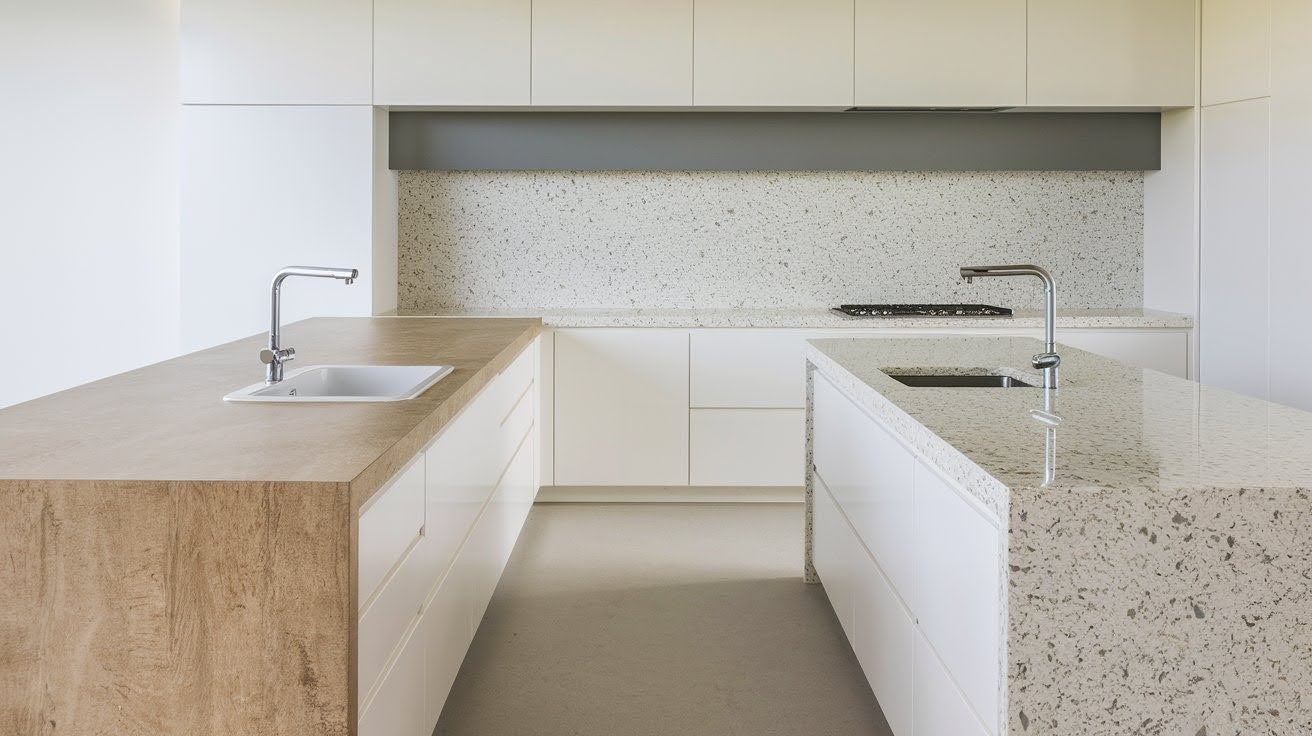
Money often becomes the deciding factor, so let’s look at what you’ll actually spend.
Cost Factor |
Laminate |
Quartz |
Material Cost |
Roughly half the cost of quartz |
Premium pricing |
Installation Cost |
Lower due to simpler work |
Higher due to complex fabrication |
Installation Type |
DIY-friendly or professional |
Professional required |
Initial Investment |
Budget-friendly |
Significant investment |
Lifespan |
10-20 years with proper care |
25+ years with minimal wear |
Replacement Likelihood |
May need replacement sooner if damaged |
Typically lasts longer without showing wear |
Long-Term Value |
Lower upfront cost, potential replacement |
Higher upfront cost, longer lifespan |
15-20 Year Cost |
May balance out with replacement costs |
Higher initial but fewer replacements |
Best For |
Tight budgets, temporary solutions |
Long-term investment, heavy use |
Installation Process
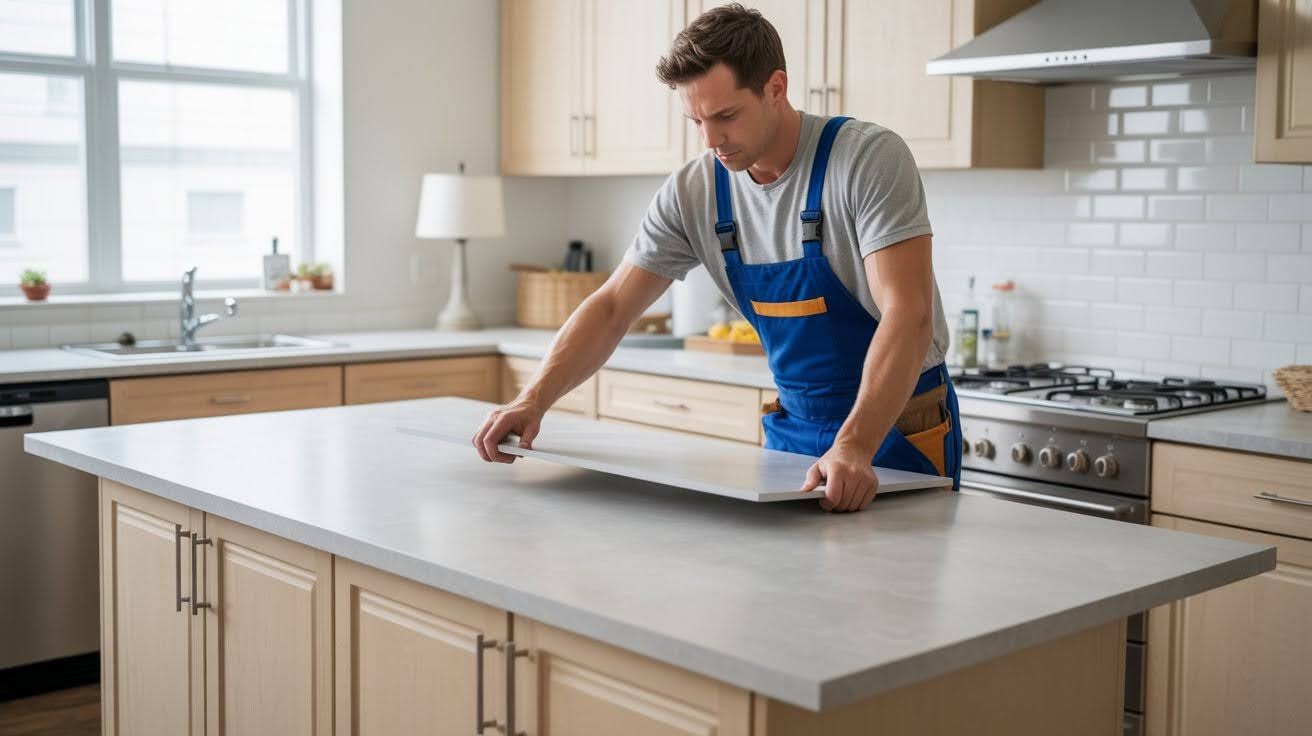
How these materials get installed affects both your initial costs and long-term results.
Laminate
Laminate installation is straightforward and DIY-friendly with basic woodworking tools. Many homeowners can complete a kitchen in a weekend.
Pre-finished sheets make the job easier, and professional installation remains affordable since most installers finish in one or two days.
Quartz
Quartz requires professional handling from start to finish. The slabs are extremely heavy, weighing several hundred pounds.
Installers template your space, cut the slabs at their shop, then bring finished pieces for installation.
Despite higher costs, professional installation ensures proper seam alignment, adequate support, and long-term durability.
Pros and Cons at a Glance
Here’s a quick reference for the main advantages and disadvantages of each material.
Laminate Pros
- Keeps costs low without sacrificing style and design variety
- Stains wipe off easily, and the surface resists bacteria naturally
- DIY-friendly installation saves money on labor costs
Laminate Cons
- Burns and scratches leave permanent marks that can’t be repaired
- Doesn’t stand up to heavy use like stone alternatives
- Feels less substantial than real or engineered stone
Quartz Pros
- Serious durability with a non-porous surface needing minimal maintenance
- Luxurious, high-end appearance with realistic stone patterns
- Better heat resistance, and some damage can be professionally repaired
Quartz Cons
- High price tag for both material and professional installation required
- No DIY option due to the heavyweight and complex fabrication
- Surface feels cold and hard, with extreme heat still causing damage
Which Is Better for You?
The right choice comes down to three main factors: your budget, how you use your kitchen, and what look you’re after.
If you’re working with limited funds or doing a temporary update, laminate makes practical sense. For long-term installations where durability matters, quartz justifies its higher cost.
Think about your daily habits – do you use hot pans frequently or have kids who might be rough on surfaces? Your lifestyle should guide the decision. Visit showrooms to see samples in person before committing.
Conclusion
About the debate of laminate versus quartz countertops, laminate beats quartz for price and for variety. Quartz may last, as it seems more upscale now. But either is probably right for you.
I have seen both materials work beautifully in the right home. Just be honest. How long are you going to be in your home? Picture yourself cooking in each.
For the best advice, speak with a kitchen-design specialist. That specialist can come into your home and make specific recommendations. They’ll help you make a choice you’ll love throughout the years.
Please drop a comment below now. Share also what matters most to you in a countertop.
Frequently Asked Questions
Can laminate countertops look like real stone?
Modern laminate replicates stone patterns quite well with improved printing technology. From a few feet away, good laminate can fool most people, though it won’t match the depth and weight of actual stone.
Does quartz stain easily?
No, quartz resists staining exceptionally well because it’s non-porous. Even coffee, wine, and oils wipe up without leaving marks when cleaned promptly.
How long do laminate countertops typically last?
Laminate countertops usually last 10-20 years with proper care. Avoiding heat damage and using cutting boards extends their life significantly.
Is quartz worth the extra cost over laminate?
Quartz justifies higher prices for homeowners planning to stay long-term with its durability and low maintenance. For short-term situations or tight budgets, laminate offers better value.
Can I install laminate countertops myself?
Yes, laminate installation is DIY-friendly for people with basic tool skills. Many homeowners complete the project over a weekend, saving on labor costs.

